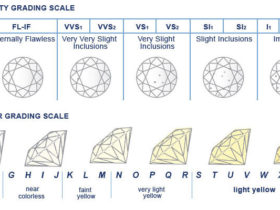Simply put, infertility is defined as the inability to conceive a child after a year-long period of trying. While this basic definition is easy enough to understand, the actual mechanics of an infertility diagnosis are a bit fuzzier.
Aside from more complex questions, such as the risks of IVF or your body’s influence on donor eggs, there can be significant confusion about basic components of infertility diagnoses. Misconceptions and lack of education on these topics often leads to many inquiries about what causes fertility issues and how to fix them.
Whether you or someone you love has been struggling with conception problems, it’s time to pull back the curtain and learn about this troubling condition.
How Common Is Infertility?
It’s a common misconception that getting pregnant is easy. Sure, many people never have problems conceiving a baby, but a substantial number will face some type of fertility issue on their quest to become a parent.
Statistics show that up to 9% of men and 11% of women of reproductive age will struggle with fertility-related diseases or problems.
In fact, one of the more well-known fertility facts is that 1-in-8 couples will struggle to get pregnant, sustain a pregnancy, or experience a live birth.
Who is Affected By Fertility Problems?
Regarding infertility, one thing can be said for sure: this is an equal opportunity condition.
Despite age, race, sex, or overall health, there are no individuals that are 100% safe from fertility problems.
Fertility diagnoses, on the other hand, are not one-size-fits-all.
There are many different reasons someone might find themselves unable to conceive. Some of the most common conditions which affect fertility include:
- Stress
- Weight problems, i.e., being overweight or underweight
- Advanced age
- Poor egg quality
- Poor sperm quality or sperm motility
- Low ovarian reserve
- Ovarian insufficiency
- Polycystic Ovarian Syndrome (PCOS)
- Anovulation (not ovulating)
- Thyroid problems
- Endometriosis
- Pelvic inflammatory disease
These common causes aside, it’s worth noting that 15-30% of individuals and couples are diagnosed with unexplained infertility.
Coming to Terms with Your Infertility
When you’re facing concerns regarding your inability to get pregnant, the first step you should take is to make an appointment with your gynecologist or primary care physician to gather more information.
Your healthcare practitioner will likely prescribe a series of tests and labs to determine the state of your reproductive health. These include various bloodwork, ultrasounds, and other procedures to evaluate the health of your uterus, ovaries, and cervix.
Using information gathered from these exams, they may suggest you continue trying on your own using at-home ovulation tracking methods, or they could suggest you make an appointment with a fertility specialist.
However, the physical portion of infertility is just one aspect patients must come to terms with.
Fertility troubles are a gut-wrenching problem for those forced to contend with them. In addition to seeking medical treatment options to help you conceive, it can be helpful to set up an appointment with a counselor to work through the emotional side effects that can often come with this type of diagnosis.
Finding the Best Path to Help You Get Pregnant
Once you start seeing a certified fertility specialist, your doctor will help you determine which type of infertility treatment protocol is best for your unique situation. While there are many different options available, some of the most common include:
- Intrauterine Insemination (IUI): Otherwise known as the “turkey baster” method, an IUI is one of the most common fertility treatments. It’s a typical starting point for many individuals and couples trying to get pregnant. This process involves collecting sperm from your partner or a sperm donor and inserting it directly into your uterus.
- In Vitro Fertilization (IVF): During an IVF treatment protocol, not only is sperm collected, but you’ll also need to have eggs collected, as well. The individual undergoing the IVF cycle will begin taking a regimen of ovarian stimulation drugs to produce an increased number of eggs. Those eggs will be collected, fertilized, and then placed directly into their uterus with a thin catheter.
- Donor Egg Cycles: When someone is told their eggs are no longer viable for pregnancy, it might be necessary to find an egg donor. Once you’ve selected a fresh or frozen egg donor and receive your egg lot, the remainder of the process closely resembles a traditional IVF cycle.
Infertility Doesn’t Mean You Can’t Build a Family
When your body isn’t doing what you expected it to be doing and getting pregnant seems out of reach, it can be easy to feel let down by the experience and assume it’s never going to happen.
On the contrary, there are many options available that can help you build the family of your dreams. Whether you choose IVF, donor eggs, or even adoption, keep in mind that the world is full of possibilities. The answer to your fertility woes is waiting for you to find it.












Leave a Reply